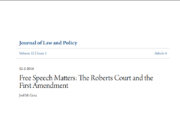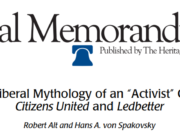This piece considers the merits of applying the Mathews v. Eldridge balancing test when an elected judge threatens a litigant’s due process rights. We argue that this approach is particularly compelling in light of the Supreme Court’s 2009 decision in Caperton v. A.T. Massey Coal Co. In Caperton, the Supreme Court recognized that a litigant’s due process may be violated if the judge harbors an objective “probability of bias.” In perhaps his most vigorous dissent since joining the Court, Chief Justice Roberts posed over forty questions about the potential scope of the decision. Given the Court’s 2002 decision in Republican Party of Minnesota v. White, Justice Roberts has good reason to be concerned. In White, the Court ruled that once a state allows judges to be elected, it can’t muzzle them – candidates for judicial office have the right to announce their views on contentious issues of the day. Taken together, Caperton and White provide the makings of a constitutional crisis. On the one hand judges have a First Amendment right to say almost anything, even if it seems to effectively bind them in future cases. On the other hand, litigants have a due process right not to face a judge whom a reasonable person may deem biased given his previously advertised views. This Article argues that weighing the due process violation by using the reliable and flexible approach developed in Mathews v. Eldridge keeps both decisions intact, while protecting the rights of both the judicial candidates and the litigants.














